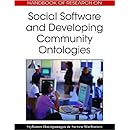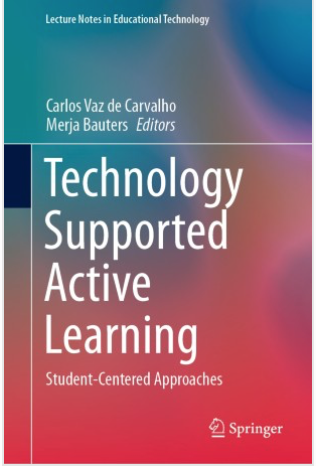Last ICWL 2016 conference in Rome made me reconsider the innovative learning ecosystem concept in my studies and instead consider using the smartness of learning ecosystems since innovative is a relative concept while smartness is not, as well as smartness may be nicely interpreted as a niche providing fitness and flow experiences.
I liked an interesting keynote by Carlo Giovanella from Tor Vergata University of Rome – Dept. of Educational Science and Technologies. He described a survey done in several universities to capture the smartness of educational learning ecosystems – Smartness of learning ecosystems and its bottom-up emergence in six european campuses (2016): Survey with university students at different campuses: a) the detection of the degree of satisfaction related to the levels of the Maslow’s Pyramid of needs, and b) the detection of indicators related with the achievement of the state of “flow” by the actors involved in the learning processes. Identifing: a) the set of the most relevant indicators; b) a “smartness” axis in the plan of the first two principal components derived by applying a Principal Component Analysis (PCA) to the spaces of the selected indicators.
He refers to smartness as follows:
The smartness or attractiveness of an ecosystem does not depend exclusively on its ability to run “all gears” in an effective and efficient manner. It, rather, depends on its ability to create an environment able to meet the individuals’ basic needs and keep them in a state of positive tension in which their skills are stimulated by adequate challenges, to favor the achievement of the self-realization (Giovanella, 2014) –
Giovannella C., Smart Territory Analytics: toward a shared vision. In: SIS 2014, CUEC, (2014).
NOTE: that actually is the definition of the niche in ecology, but Giovanella in 2016 article combines the Flow state as the required quality of satisfaction for people in this learning niche: state where challenges are exciting and adequate to the skills owned by the individuals, which, in turn, are expected to be improved due to the challenges.
In his previous paper of smart cities Giovanella defines smartness of cities as follows: a city is smart “when investments in human and social capital and traditional (transport) and modern (ICT) communication infrastructure fuel sustainable economic growth and a high quality of life, with a wise management of natural resources, through participatory governance“.
This captures the systemic, organizational view to smartness and incorporates implicitly bottom-up self-organization in an ecosystem, and explicitly sustainability of the learning ecosystem as a common good and high quality of individual’s life as the evaluation criteria.
——————–
Giovanella’s approach technically was very similar what we have done in studying the school learning ecosystem services in Georgian, Ghanan schools (see below). However, we used observation and interviews (the external view to the existing niches). We mapped data on the digital service grid quantitatively as an input. So we yet cannot measure the ecosystem fit to user’s challenges as the quality of smartness but rather we may set learning type variables such as learning and facilitation services related with classical ICT teaching or innovative ICT teaching and see how the other ecosystem services determine those.
———————-
Georgian papers:
K-means cluster analysis was run and 2 models of schools were identified using developed instrument. Discriminant analysis was run to identify predictor variables for further analysis of the schools’ belonging to certain model. Innovative and non-innovative schools differed by teacher-student partnership, authentic and flexible learning environment, but the biggest difference was in change management domain.Discriminant analysis detected following variables as predictors: school’s ICT vision and agenda, motivation and support system promoting innovative practices, teachers’ professional learning relevance to the curriculum requirements and school strategy.
Beyond the previous study we built Bayesian Dependency model for innovative schools’ cluster to find probabilistic dependencies of the services in digitally enhanced schools illustrated the model with qualitative case study descriptions. The findings suggested that trade-off type of services requiring schools initiative to get service and change management services were the biggest determinants of the schools belonging to the innovative technology-enhanced learning ecosystem type.
Ghanan papers:
This paper mapped descriptively Internal, External and Transactional Infrastructure, Learning and teaching and Change management services in Ghana and revealed the developed and undeveloped service areas for Ghanan schools and the mismatch between externally provided and internally applied services.
The results of Canonical Discriminant function analysis indicated that external digital learning services informed digital divide in two school clusters – the less advanced schools were not able to proactively transact external digital learning services into their schools.
———————–
Since our grid data contain many services, the system view to services’ interaction appears to be complex. We have reduced services to the following domains:
Innovative ICT learning
Classical ICT learning in computer class and lessons, factual learning
Centrally provided technology, connectivity and resources
Transactionally obtained technology, connectivity and resources
Norms and ownership of ICT related aspects
Training and professional learning for ICT
Open access to resources
Resources provided by external business
Maintenance, Security and monitoring
Incentives and motivation
Peer-learning, networking, sharing resources
Satisfied access to ICT and teaching competences
Collective Involvement to change management if ICT in organization
Authoritive ICT development in organization
Linear modelling with stepwise method with united dataset from Ghana and Georgia indicated school learning ecosystem factors that determine certain ICT learning to be prevailing in schools:
- the predictors of classical ICT teaching in school learning ecosystem are the availability of services from types: Incentives and motivation, Authoritive ICT development in organization, Open access to resources
- the predictors of innovative ICT teaching in school are the availability of services from types: Peer-learning, networking, sharing resources, Transactionally obtained technology, connectivity and resources, and Open access to resources









